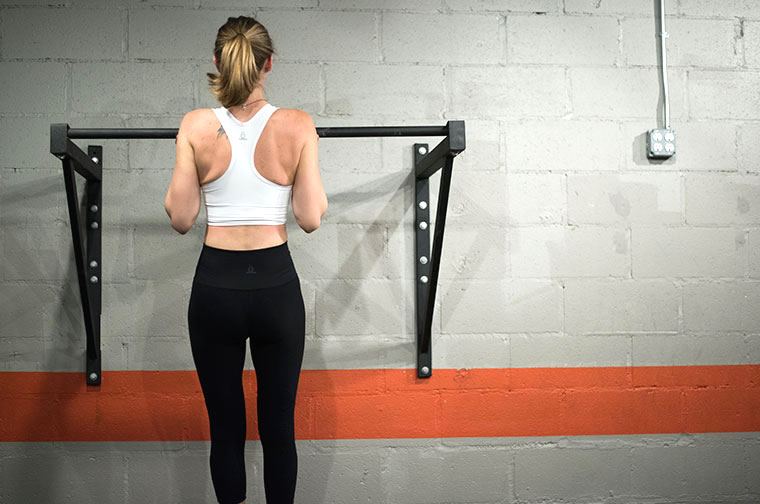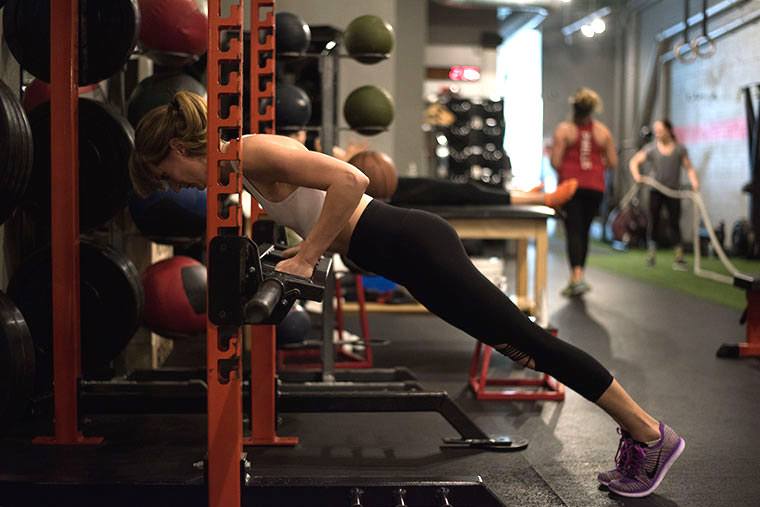I Spent Three Months Training for a Pull-up—Here’s What Happened
So early last April, I asked one of the smartest trainers I know—Albert Matheny, co-owner of elite Manhattan personal training gym Soho Strength Lab—if he would train me with one super-specific goal in mind: I wanted to able to complete a true pull-up. Why? I work out a hell of a lot, but sometimes feel like my upper-body strength is lacking. A pull-up seems like a functional movement that someone who claims to be "in shape" should be able to do.
I met with Matheny about twice a week for almost three months, and the process was tougher than I expected. But when I finally pulled myself over that bar, I felt strong as hell in more ways than I'd imagined.
Here are five ways that conquering pull-ups made me stronger than I've ever been before.

1. I got better at push-ups...and a whole bunch of other exercises
Pull-ups don't require just one muscle group to get the job done; they engage the whole body. And stronger lats, biceps, shoulders, and abs mean you naturally get better at other tough exercises, like push-ups, dead lifts, and planks. (Admittedly, part of my overall improved strength was from working one-on-one with a seriously skilled personal trainer.) I basically didn't run for a few months, but when I did hit the road again, I ran faster than before, what with my newfound core and glute strength powering me forward.

{{post.sponsorText}}
2. I learned to move more efficiently
The full-body nature of the pull-up means I got used to hearing rapid-fire instructions from Matheny, along the lines of, "Point your toes, tighten your abs, tighten your glutes, pull your shoulders down, pull from your back, and keep pulling from your biceps!" Like, all at once. By the time I mastered the mechanics, my body was moving in new, totally efficient ways.

3. I got better at pushing past my own limits
In group fitness classes, instructors often remind you that you're stronger than you think. But pull-ups lay that concept bare in a really visceral way. Many times I'd get close to the top and feel like I was maxed out, but then Matheny would yell, "Keep pulling, keep pulling, keep pulling!" and somehow, I was able to go further. When the goal is so tangible, yet so tough, you push yourself in new ways.
4. My posture was completely transformed
Everyone has hunched shoulders these days thanks to desk jobs and iPhones, and mine were slumped even earlier from years of slouching to disguise my height (blame it on all the short boys in middle school). I've been trying for years to work on it, but the combination of strengthening my back and opening up my chest and shoulders while working toward a pull-up is the only thing that's truly worked. I'm no ballerina, but I'm standing straighter than I ever have before.

5. I gained confidence
This is partly due to the Amy Cuddy-effect: Research has shown that better posture is linked to feeling more confident. Plus, my body changed a ton (hello sexy back muscles, toned arms, and abs you can almost see). So yeah, some of that confidence came from simply feeling good, appearance-wise.
But developing serious functional strength also made me feel like I can power my way through life on a slightly higher plane. I started to think, "If I can get over that bar, I can definitely get through X, Y, and Z." I've trained for half-marathons before, and I've felt accomplished crossing the finish line, but the change in my body—and my confidence—was nowhere near as profound.
As women, we're so often told that we're not strong, and even that we outright cannot do pull-ups. When I finally did, I was so aware of my own strength and my ability to rise up—literally, and in a more metaphorical sense—and it was awesome. Plus, if I ever find myself in a situation where I'm hanging off a cliff, it's nice to know I actually have a chance.
Want to start training to do pull-ups? Follow these seven smart tips, here. And yes, cross-training is a really smart idea no matter what your workout of choice is.
Loading More Posts...